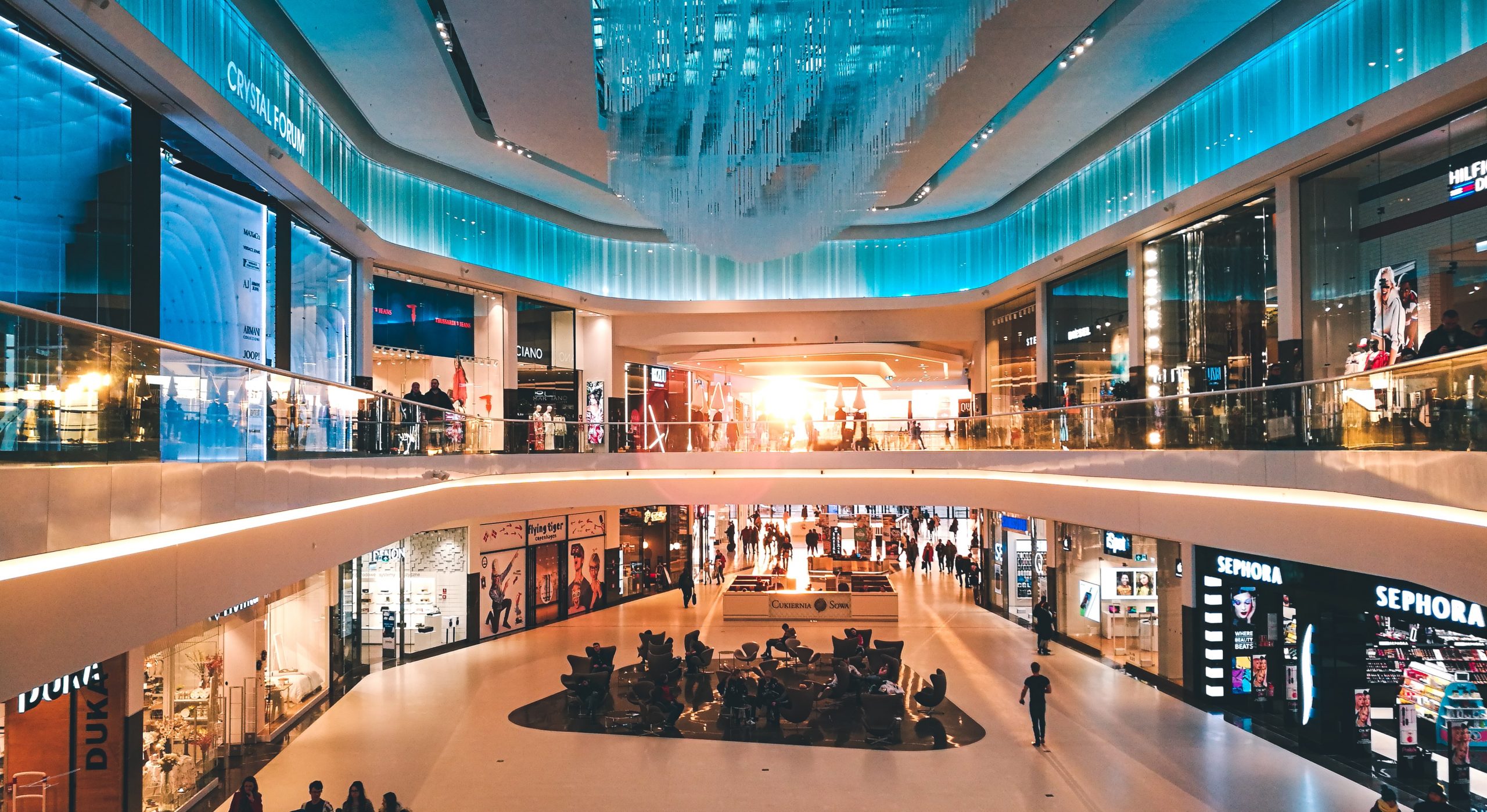Asia-Pacific will remain the retail industry’s growth engine in the post-corona world. Retailers need to prioritize action in several key areas if they want to gain a sustainable edge over rivals, analysts from consulting firm Bain said in a recent report.
According to the report titled “The Future of Retail in Asia-Pacific: How to Thrive at High Speed”, Asia Pacific generates about three-quarters of global retail growth and two-thirds of online growth.
“From 2014 to 2019, the compound annual growth rate for Asia-Pacific retail sales was more than quadruple that of the rest of the world. Online sales growth was nearly double the rest of the world’s, even though Asia-Pacific e-commerce was starting from a higher base (online penetration in the region grew from 9% to 19% between 2014 and 2019, while rising from 6% to 11% in the rest of the world.),” Bain said.
The company’s analysis shows that Alibaba, JD.com, and Pinduoduo—major Chinese retailers which together with Japan’s Seven & I now rank among the top 10 retailers worldwide—are riding that growth.
Bain noted that around a decade ago, only one or two Asia Pacific-based retailers made the top 10 list.
Read more: 7 Consumer Behavior Trends Emerging From COVID-19
“What’s happening in China today is going to happen in other markets to a lesser or greater degree depending on the market,” Kanaiya Parekh, expert partner, Hong Kong, at Bain, said in a phone interview with CNBC. “People need to be looking at China, especially with regards to the future of retail.”
Bain says Asia-Pacific’s advanced digital maturity is one reason why it should remain the retail industry’s growth engine as well as its window to the future.
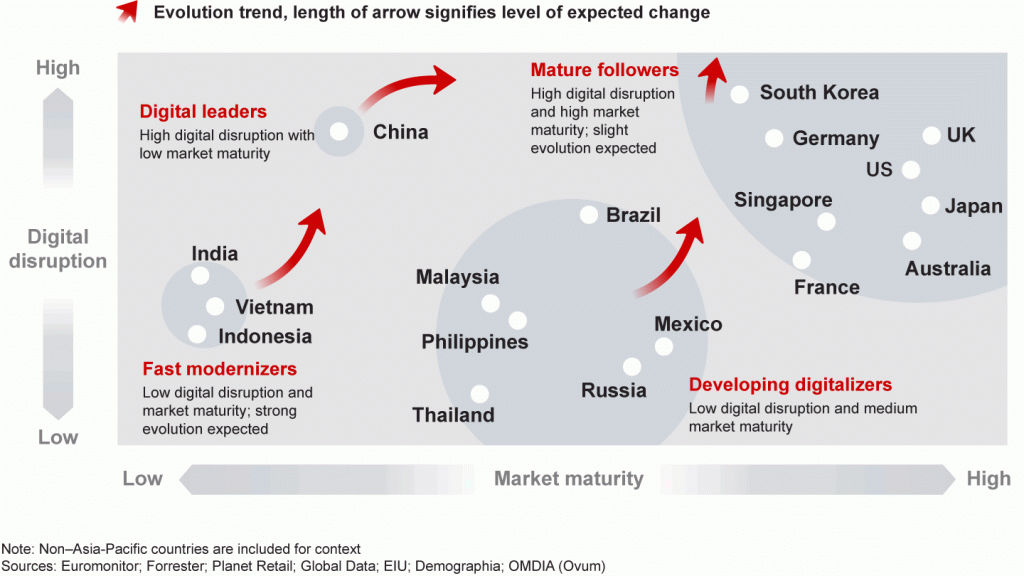
Six Imperatives
In a region of 48 countries that includes the mature markets of Australia and Japan, according to Bain, there is more than one path to a thriving future.
However, it says the nimblest executive teams are prioritizing action in six areas to stay ahead of the competition: reinventing their value proposition, winning digital engagement, futureproofing assets and operations, mastering the last mile and supply chain resilience, defining their ecosystem destination, and retooling for digital. Bain analysts believe that focusing on these areas can help retailers succeed.
1- Reinvent Your Value Proposition
Bain’s study shows that Asia-Pacific consumers are still becoming more middle class, urban, and more digitally driven.
“Except for China and India, dual-income households are on the rise as women continue to join the workforce. Yet the gap between richest and poorest has also widened in many parts of the region, and COVID-19 is ratcheting up pressure on the most deprived by increasing unemployment.”
The firm’s analysts believe that retailers must ensure their value proposition meets the needs of this customer base, which is evolving fast.
“That might involve putting ultra-convenience at the heart of their offering in response to denser urbanization and the rise of time-poor dual-income households; ready meals are already growing in popularity, for instance—their penetration rate more than doubled in South Korea and Thailand between 2010 and 2019.”
Bain also argues that some retailers might benefit from pushing deeper into value/discount formats and offers as more consumers are struggling financially. “Others might tilt toward rising interest in health, wellness, and sustainability—or use advanced analytics to meet the swelling demand for personalization.”
2- Win Digital Engagement
The consulting firm says improved digital engagement with shoppers, particularly through mobile phones, is likely to be vital regardless of a retailer’s evolving value proposition.
“Asia-Pacific consumers already tend to do most of their online shopping through their phones, and this trend is set to deepen, with Forrester forecasting that 70% to 85% of e-commerce will be conducted by phone in 2023 in key regional markets (vs. a forecast of 43% in the U.S.),” the report reads.
The study shows that people are buying more through super-apps such as WeChat, Paytm, KakaoTalk, and Grab. Social media-based e-commerce has also been gaining ground in recent years.
4,700 consumers in China surveyed this spring, told Bain that they were now more likely to use short-form videos and livestreams as a research and purchasing tool than they had been before the coronavirus pandemic.
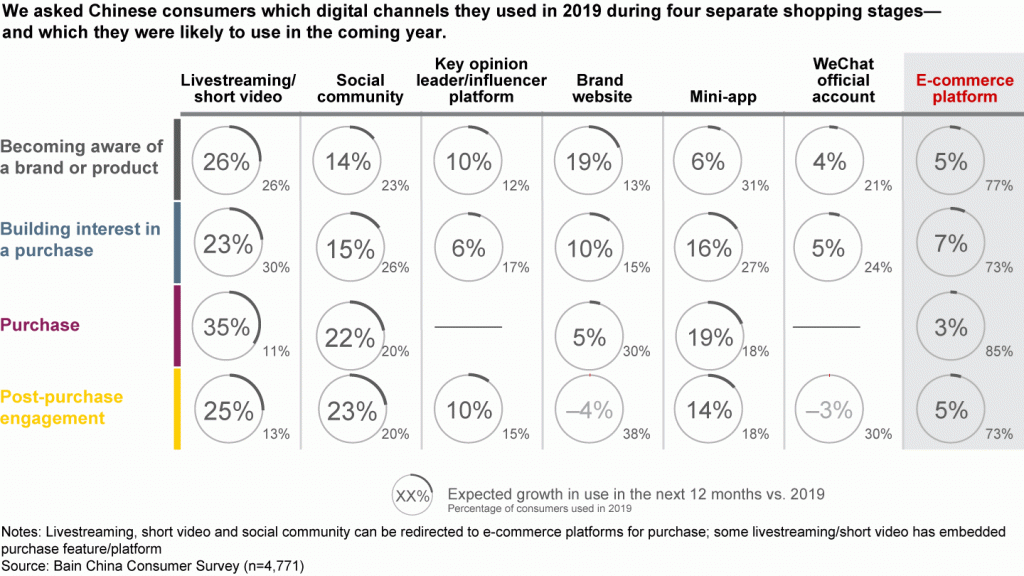
“Asia-Pacific retailers have to follow the eyeballs of their customers. They need to optimize their presence on super-apps and social commerce channels,” the report said, adding that they need to keep improving the user experience online and should keep asking themselves if they are serving up the right content formats.
3- Futureproof Assets and Operations
According to Bain, in Asia-Pacific, only retailers in Australia and Japan (and to a lesser extent South Korea) have built out their physical store networks as extensively as their counterparts in Western Europe and the U.S.
“Outside these territories, the region’s retailers are finding growth enough online and are now unlikely to expand their physical network to anything like Western levels of ubiquity,” the report says.
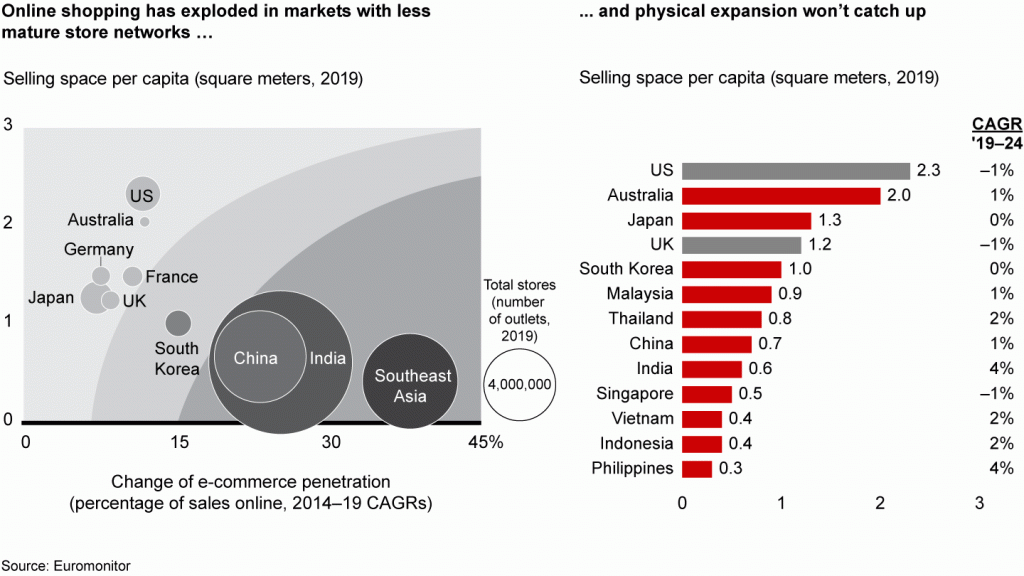
Bain analysts believe that old formats will need to be updated or even abandoned. “The online migration of sales, hastened by COVID-19, is squeezing supermarkets and hypermarkets. For example, sales per square meter in hypermarkets declined by 6% in South Korea and 14% in China between 2014 and 2019; rising costs make that declining sales density unsustainable. Conversely, convenience stores have already been gaining traction.”
The firm notes that stores will need to change roles as well as format, predicting that more stores will operate as showrooms or hubs for order picking or click-and-collect services, with increasing level of automation.
“Moving to zero-base costs can help while investing in technology to improve operations can create a virtuous circle of savings and improved customer experience. Examples include scan-and-go payment technologies, smart shelves, radio-frequency identification and predictive ordering and replenishment.”
4- Master the Last Mile and Supply Chain Resilience
Bain’s analysis indicates that consumers want faster and cheaper home delivery and says retailers will need to tailor their last-mile approach to local conditions.
“For instance, highly centralized and automated fulfillment centers work well in Sydney, with its expensive real estate and workers; its logistical maturity is also ideal for home delivery by truck. Shanghai suits a mix of centralized and hyperlocal fulfillment, trucks and nimbler two-wheelers, manual and automated picking. In Mumbai and Jakarta, with their patchier roads and lower-cost labor, the pendulum swings much further toward hyperlocal fulfillment, motorbikes, scooters, and picking-by-hand.”
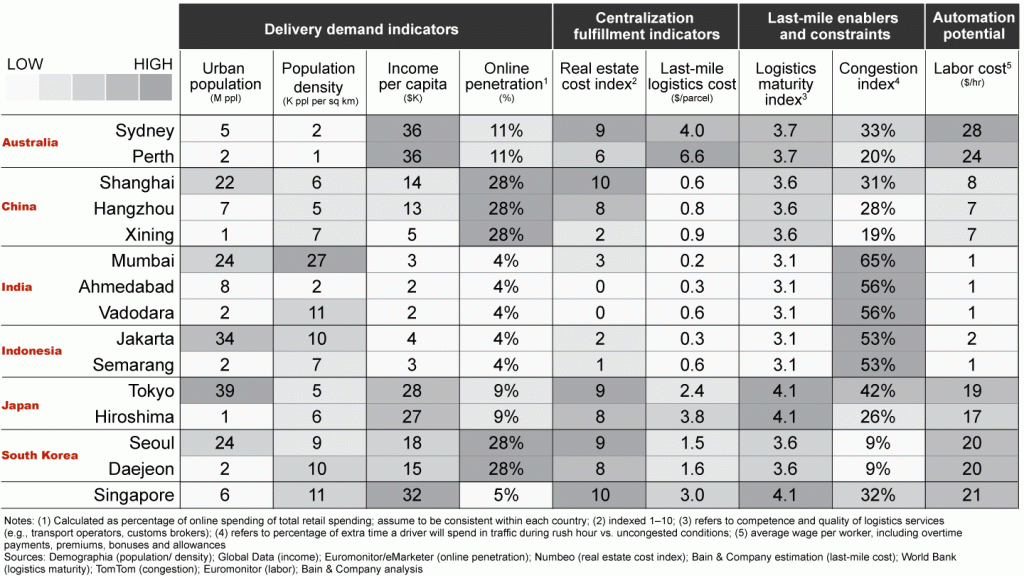
The report recommends that executive teams should understand the developments that make investments in automation more feasible and anticipate how macrotrends will shape last-mile economics.
“At the same time, retailers need to be attuned to the way that COVID-19 is likely to lead to shorter, more local, and more automated supply chains as companies seek greater resilience.”
5- Define Your Ecosystem Destination
Bain’s observations show that the pandemic has strengthened ecosystems strategically and has caused traditional retailers to seek ecosystem partnerships
“Such alliances can offer retailers a capital-light business model and fast access to scale advantages they might not have the time or the balance sheet to build. In turn, traditional retailers give the ecosystem player access to a physical network; for example, Amazon India uses Future Group’s retail stores for deliveries,” the report reads.
The consulting firm says executive teams in the region should define ecosystem destinations and decide whether they should build their ecosystem, acquire new capabilities, or partner with others.
6- Retool for Digital
Bain notes that many retailers will need to gain new skills in advanced analytics to exploit the full potential of their data.
“Executive teams should also hone capabilities in other key areas of technology: artificial intelligence, the Internet of Things, virtual reality and augmented reality, autonomous robotics, and cybersecurity. Tomorrow’s winners will ruthlessly prioritize the new use cases that can deliver the biggest benefits to customers.”
Read more: These 3 Nascent Macro Technology Forces Will Drive Transformational Change
The report added that embracing agile ways of working and leading, cultivating links with external experts, and incentivizing risk-taking and innovation can extend retailers’ competitive advantage.
Retail’s Future
Bain says the coronavirus pandemic has dramatically shortened the time frames for change but that Asia-Pacific retailers remain unusually well placed to cope with the disruption.
“Profit pools remain healthy, and the region boasts many companies that are already attuned to the industry’s new digital future—and in some cases are creating that future themselves,” the consulting firm concluded.







